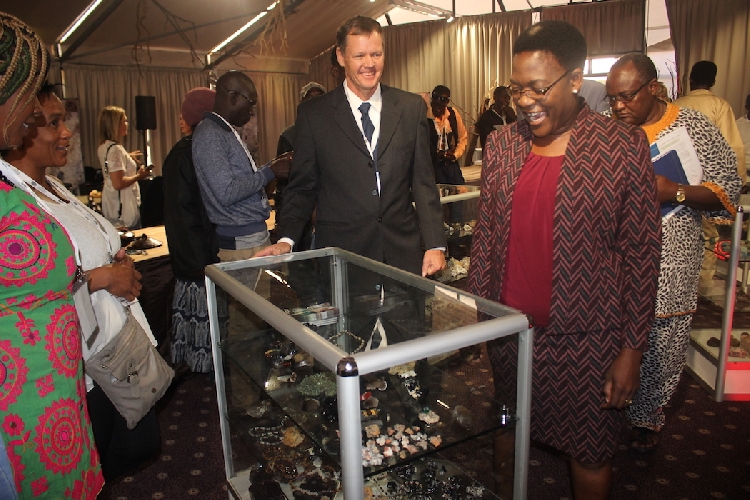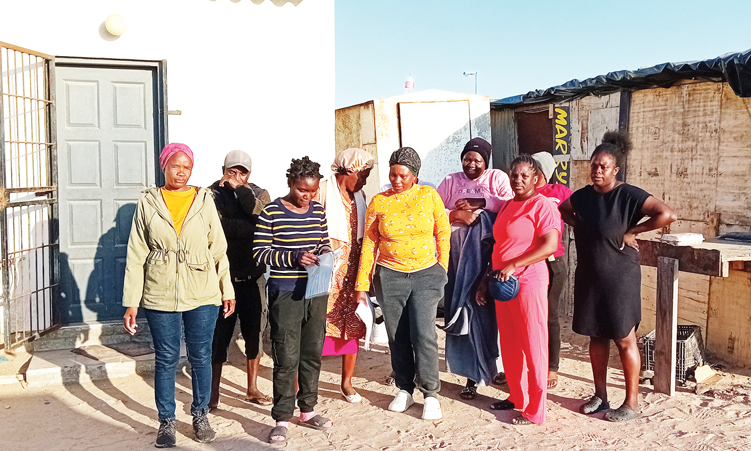FROM small miners who dig up the rough coloured gems, to secondary section members who polish and cut diamonds as well as manufacturers of the final jewellery, the Namibian Coloured Gemstone and Jewellery Showcase taking place yesterday and today at a Windhoek hotel was an eye catcher.
The two-day event, organised by the trade and industrialisation ministry with the Jewellers Association of Namibia and GIZ assistance, was a platform for small-scale miners, gemstone cutters and traders and jewellers to display and sell their products.
In her opening remarks of the showcase yesterday, deputy mines and energy minister Kornelia Shilunga said the quality, diversity and uniqueness of Namibian coloured gemstones have made Namibia an acclaimed supplier of tourmaline, beryl and garnets, and many other gemstones in Africa.
Shilunga added that this goes well with the fact that the International Gemology Society, who gathered in Namibia yesterday and today to discuss gemological sciences, have chosen the country for its 35th conference.
“Overall trade and retail flowing from the coloured gemstone value chain has multiplied. Many buyers from abroad and from South Africa are trading in Namibia. Today, however, the coloured gemstone sector is more fragmented than it was in 1990,” she said.
Shilunga, who toured the showcased products tent yesterday said although more rough stones are traded, the actual value added to the value chain has dropped over the years.
She further said Namibia is currently suffering from the shortage of raw gemstones and called on the showcase to address that challenge.
She also said one of the desired outcomes of the two-day showcase is the setting up of a partnership project for 2018.
“This project will study the development needs of small-scale miners, concentrating on one pilot region and identifying skills development as well as technology improvement needs,” said Shilunga.
The showcase also runs a competition to promote value addition to Namibian gems and minerals, where jewellery pieces, which must include gemstones mined and preferably ennobled (cut and polished) in the country, will be rated by the public. The 10 best jewellery pieces will become part of a “Namibian Coloured Gemstone Jewellery selection” which will be marketed and promoted over the next two years.
Jewellers Association of Namibia chairperson Rolf Adrian thanked the exhibitors who travelled all the way from the regions to attend the event.
“Our specific aim is that we add value in this country,” said Adrian.
When announcing the showcase last week, the trade and industrialisation ministry said with the Growth at Home Strategy, the government was promoting value addition to local resources and raw materials, thereby enhancing the competitiveness of the Namibian economy through support to industrialisation.
One of the priority industries is coloured gemstones and jewellery products, the ministry said.
In a general statement yesterday, the president of the Namibia Chamber of Commerce and Industry (NCCI), Sven Thieme, called for the acceleration of local value addition.
“Put simply, value-addition drives its importance from the fact that it has been known to have led to increased revenues of businesses as every extra layer adds a percentage of increased financial value. This has the effect of improving the incomes of the producers,” he said.
Thieme also said the NCCI supports the “Growth at Home” narrative – “which basically says whatever raw materials Namibia has, whether minerals, agricultural commodities or any other commodity, local value addition should take place before they are exported. This is because the export of raw materials equates to the export of job opportunities.”
Stay informed with The Namibian – your source for credible journalism. Get in-depth reporting and opinions for
only N$85 a month. Invest in journalism, invest in democracy –
Subscribe Now!










